THE GUIDE OF THE PERPLEXED
Moses Maimonides
Translated with an Introduction and Notes by
SHLOMO PINES
With an Introductory Essay by
LEO STRAUSS
VOLUME II

THE UNIVERSITY OF CHICAGO PRESS
Chicago
The University of Chicago Press, Chicago 60637
The University of Chicago Press, Ltd., London
1963 by The University of Chicago. All rights reserved.
Published 1963.
09 08 07 06 05 04 03 02 01 00 12 13 14 15 16
Published with the aid of the Bollingen Foundation
Designed by Andor Braun
Vol. 1:
ISBN-13: 978-0-226-50226-7 (e-book)
ISBN-13: 978-0-226-50230-4 (paper)
ISBN-10: 0-226-50230-9 (paper)
Vol. 2:
ISBN-13: 978-0-226-50227-4 (e-book)
ISBN-13: 978-0-226-50231-1 (paper)
ISBN-10: 0-226-50231-7 (paper)
LCN: 62-18113
 The paper used in this publication meets the minimum requirements of the American National Standard for Information SciencesPermanence of Paper for Printed Library Materials, ANSI Z39.481992.
The paper used in this publication meets the minimum requirements of the American National Standard for Information SciencesPermanence of Paper for Printed Library Materials, ANSI Z39.481992.
THE SECOND PART
of
The Guide of the Perplexed
*
[INTRODUCTION TO THE SECOND PART]
The premises needed for establishing the existence of the deity, may He be exalted, and for the demonstration that He is neither a body nor a force in a body and that He, may His name be sublime, is one, are twenty-five all of which are demonstrated without there being a doubt as to any point concerning them. For Aristotle and the Peripatetics after him have come forward with a demonstration for every one of them. There is one premise that we will grant them, for through it the objects of our quest will be demonstrated, as I shall make clear; this premise is the eternity of the world.
1] The first premise: The existence of any infinite magnitude is impossible.
2] The second premise: The existence of magnitudes of which the number is infinite is impossible that is, if they exist together.
3] The third premise: The existence of causes and effects of which the number is infinite is impossible, even if they are not endowed with magnitude. For instance, the assumption that one particular intellect, for example, has as its cause a second intellect, and that the cause of this second intellect is a third one, and that of the third a fourth, and so on to infinity, [2b] is likewise clearly impossible.
4] The fourth premise: Change exists in four categories: it exists in the category of substance, the changes occurring in a substance being generation and corruption. It exists in the category of quantity, namely, as growth and decrease. It exists in the category of quality, namely, as alteration. It exists in the category of place, namely, as the motion of translation. It is this change in the category of place that is more especially called motion.
5] The fifth premise: Every motion is a change and transition from potentiality to actuality.
6] The sixth premise: Of motions, some are essential and some accidental, some are violent and some are motions of a part this being a species of accidental motion. Now essential motion is, for example, the translation of a body from one place to another. Accidental motion is, for example, when a blackness existing in this particular body is said to be translated from one place to another. Violent motion is, for example, the motion of a stone upwards through the action of something constraining it to that. Motion of a part is, for example, the motion of a nail in a ship; for when the ship is in motion, we say that the nail is likewise in motion. Similarly when any compound is in motion as a whole, its parts are likewise said to be in motion.
7] The seventh premise: Everything changeable is divisible. Hence everything movable is divisible and is necessarily a body. But everything that is indivisible is not movable; hence it will not be a body at all.
8] The eighth premise: Everything that is moved owing to accident must of necessity come to rest, inasmuch as its motion is not in virtue of its essence. Hence it cannnot be moved forever in that accidental motion.
9] [3a] The ninth premise: Every body that moves another body moves the latter only through being itself in motion when moving the other body.
10] The tenth premise: Everything that is said to be in a body is divided into two classes: either it subsists through the body, as do the accidents, or the body subsists through it, as in the case of the natural form. Both classes are to be considered as a force in the body.
11] The eleventh premise: Some of the things that subsist through body are sometimes divided through the division of the body and hence are divisible according to accident, as for instance the colors and the other forces that are distributed through the whole of the body. In a like manner some of the things that constitute a body are not divisible in any way, as for instance the soul and the intellect.
12] The twelfth premise: Every force that is found distributed through a body is finite because the body is finite.
13] The thirteenth premise: It is impossible that one of the species of motion be continuous, except local motion, and of this only that which is circular.
14] The fourteenth premise: Local motion is the primary and the first by nature among all motions; for generation and corruption are preceded by alteration, and alteration is preceded by the approach of that which alters to that which is to be altered; and there is no growth and diminution except when they are preceded by generation and corruption.
15] The fifteenth premise: Time is an accident consequent upon motion and is necessarily attached to it. Neither of them exists without the other. Motion does not exist except in time, and time cannot be conceived by the intellect except together with motion. And all that with regard to which no motion can be found, does not fall under time.
16] The sixteenth premise: In whatsoever is not a body, [3b] multiplicity cannot be cognized by the intellect, unless the thing in question is a force in a body, for then the multiplicity of the individual forces would subsist in virtue of the multiplicity of the matters or substances in which these forces are to be found. Hence no multiplicity at all can be cognized by the intellect in the separate things, which are neither a body nor a force in a body, except when they are causes and effects.
17] The seventeenth premise: Everything that is in motion has of necessity a mover; and the mover either may be outside the moved object, as in the case of a stone moved by a hand, or the mover may be in the body in motion, as in the case of the body of a living being, for the latter is composed of a mover and of that which is moved. It is for this reason that when a living being dies and the mover namely, the soul is lacking from it, that which is moved namely, the organic body remains at the moment in its former state, except that it is not moved with that motion. However, inasmuch as the mover that exists in that which is moved is hidden and does not appear to the senses, it is thought of living beings that they are in motion without having a mover. Everything moved that has a mover within itself is said to be moved by itselfthe meaning being that the force moving that which, in the object moved, is moving according to essence, exists in the whole of that object.
18] The eighteenth premise: Everything that passes from potentiality to actuality has something other than itself that causes it to pass, and this cause is of necessity outside that thing. For if that cause were that thing and there were no obstacle to prevent this passage, the thing would not have been for a certain time in potentia but would have always been in actu. If, however, the cause of the passage from potentiality to actuality subsisted in the thing, and if there was at the same time an obstacle to it, which was subsequently removed, there is no doubt that the factor that put an end to the obstacle is the one that caused that potentiality to pass into actuality. Understand this.

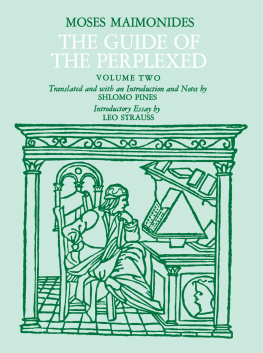

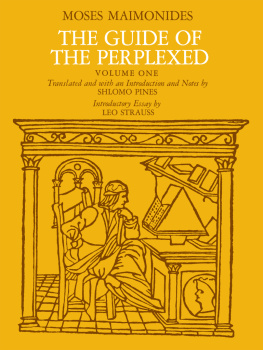


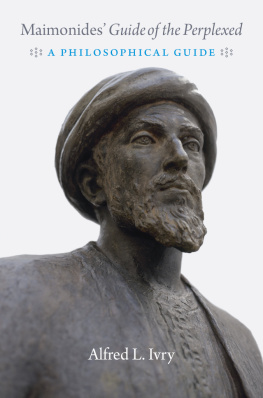
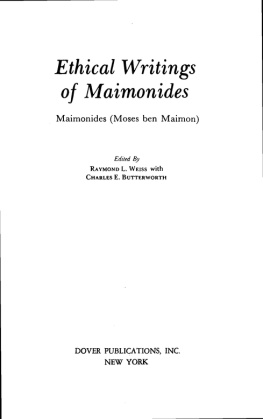
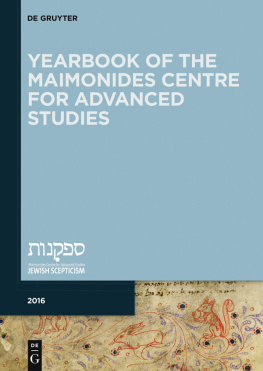
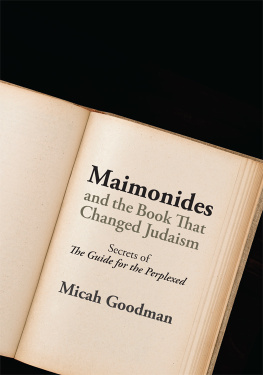


 The paper used in this publication meets the minimum requirements of the American National Standard for Information SciencesPermanence of Paper for Printed Library Materials, ANSI Z39.481992.
The paper used in this publication meets the minimum requirements of the American National Standard for Information SciencesPermanence of Paper for Printed Library Materials, ANSI Z39.481992.